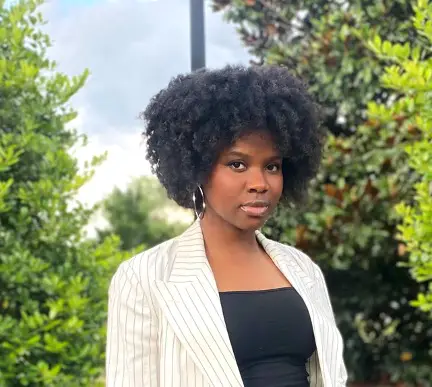If the global pandemic did not have you spending money or make you experience self-doubt, you are the GOAT. While at home in quarantine, many millennials and members of Generation Z took it upon themselves to reinvent their wardrobes and lifestyles. As a result, Gen Z turned to social media to get inspiration and ideas about dressing.
Aesthetics Wiki explains that the movement spawned from “mid-late 2010s-early 2020s internet culture,” mostly from teenagers. The trend mainly exists on social media platforms like Tumblr, TikTok and Instagram. Participants use their social media accounts to share their aesthetics. The lockdown kept everyone from each other physically, but not virtually. During the pandemic’s peak, everyone lived with themselves and figured out what lifestyle they wanted.
What Is an Aesthetic?
The term aesthetic, in an internet context, can mean many things to different people depending on their views. It is driven by visual communication and self-expression online. The internet definition of aesthetic is meant to be aspirational; people use it as a vision board to express what they want. A person must do their research before claiming a lifestyle mindlessly. People from all over the world share their style on social media like TikTok and Instagram, but what does it mean?
According to Merriam-Webster, the term aesthetics describes something “of or relating to art or beauty.” The definition is pretty easy to understand and hopefully gives you a visual image. For most millennials and Gen Z, the visual you are thinking about appears in TikTok videos and Instagram feeds.
Naomi Mirny acknowledges, “The contemporary understanding of the term has completely changed to now align with a collection of visuals that represent a broad array of concepts ranging from historical eras, locations, genres of fiction, music, and even pre-existing subcultures.” A person can often use Mirny’s list as a guide to figure out their style.
What Are the Different Types?
There are many different types, but the most prominent in 2021 is cottagecore, which romanticizes cottage life found in fairy tales and Western agriculture. Its philosophy centers around nature and simplicity. Rural life, anti-capitalism and self-subsistence describe the style of its adherents.
Another one is dark academia, which revolves around classic literature and the pursuit of learning. The visual stems from the culture of the European upper-class from the 19th century. Its followers are driven by curiosity and a love for knowledge.
In contrast, light academia is a positive theme that involves the enjoyment of life. While dark academia is brooding and gothic, light academia is cheerier and inspired by the Renaissance and romantic movements. Both themes use academic clothing and engage with the culture of western Europe, particularly its literature, music, art and history.
The Problem With Aesthetics
Having an aesthetic is something beautiful that allows a person to feel like they are a part of a community of people that think and look like them. The problem is that a Eurocentric look has become synonymous with the term “aesthetic.” Additionally, Eurocentrism relies only on western European culture for its clothes, books and way of life.
When a person searches aesthetics on Pinterest, most of the time, a person only sees pictures of attractive white people who are skinny. Abigail Reasor, writer for Her Campus, argues, “Aesthetic is dominated by white people, so white people continue to be recommended, while smaller racial groups continue to be pushed down.”
In modern-day social media, algorithms are essential and are the driver of what shows up on everyone’s screens. A person can like one thing that will continue to pop up every time because it is similar to something they liked before. The movements are often exclusive and do not allow people to be different. There is an accepted standard of beauty that puts pressure on people to look like it.
Moreover, many of the aesthetics can be seen as negative or positive, but most have dark sides. For instance, cottagecore is an aesthetic that seems like a fairytale from a book with pretty houses, a little farm and flowers. The problem with this aesthetic is that it is driven by the desire to escape reality and idealize a fairytale life that has unsettling implications.
Claire Ollivian claims, “Social media users who are sceptical of cottagecore have observed that those who uncritically embrace the aesthetic will often romanticize settler colonialism, many without realizing it.” It has been common today to dismiss the fact that white supremacist recruitment is still something that is going on and, in this case, it is driven by aesthetics. The lifestyle of cottagecore is living a rural life and romanticizing domestic roles. Ollivian argues, “A common criticism of cottagecore not only as an aesthetic but as a practice is that people’s attempts to live out the fantasy are connected to the legacy of homesteading and farming on stolen Indigenous land.”
The cottagecore lifestyle is not inherently malicious, but people who participate need to be careful of whom they follow. Do not only follow familiar people; try to investigate other races’ accounts. People of color are also reclaiming the movement because they have been excluded from the aesthetic lifestyle.
Learn about the aesthetic you are going after and do not limit yourself. Yes, aesthetics are lovely, but can also be overrated because of how seriously people take them. Please do not believe everything you see and know that life is messy and that there is always a darker meaning behind many things. Educating yourself about what you like is vital. The best way of explaining objective life reality comes from the movie “Rocky Balboa.” Rocky says: “Let me tell you something you already know. The world ain’t all sunshine and rainbows.” So if it stresses you out and makes you question yourself, think about it before committing to any lifestyle.

















